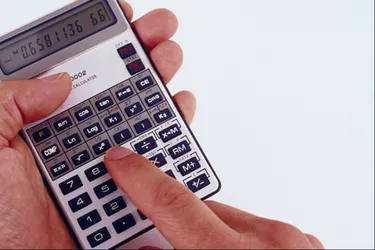
Rolling returns will determine the average annual return for a certain period. Once that period comes to an end, the rolling return will cover a new period. For example, if an investor looks at 10-year rolling returns on a stock in 2008, then the first year is 1998. The next year, the return will "roll over" so the starting year will be 1999 and the period now includes 2009. As one period ends, the return must continually "roll over" to cover the new period.
Step 1
Set the dates you want to start the rolling period and end the rolling period. For example, an investor wants a five-year rolling period for Firm A's stock return, starting in 2002 and ending in 2006.
Video of the Day
Step 2
Find the return percentages for the year. If the return percentages are not given, then the formula is: end of the period's price minus beginning of the period's price, with the result divided by the beginning period's price.
For example, on Jan. 1, 2002, Firm A's stock price was $30. On Dec. 31, 2002, the stock price was $35. So $35 minus $30 equals $5. Then $5 is divided by $30 for a return of about 17 percent. The other returns for Firm A were 10 percent for 2003, 14 percent for 2004, 5 percent for 2005 and 8 percent for 2006.
Step 3
Add the returns together. In our example, 17 plus 10 plus 14 plus 5 plus 8 equals 54.
Step 4
Divide the sum of the returns by the number of returns. In our example, 54 divided by 5 equals a five-year return of 10.8 percent.
Step 5
Eliminate the first year of the returns and add the following year as the newest year of returns. In our example, eliminate the 2002 return and add the 2007 return into the calculation. Repeat the calculation to find the new rolling five-year return.
Video of the Day